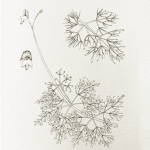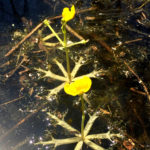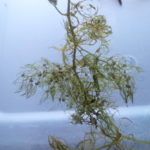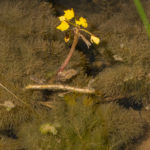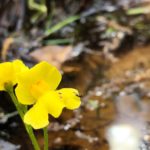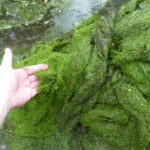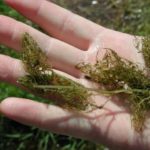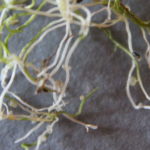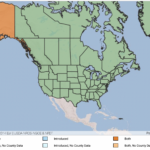Utricularia spp.
USDA, NRCS. 2018. The PLANTS Database (http://plants.usda.gov, 28 March 2018). National Plant Data Team, Greensboro, NC 27401-4901 USA.
Illustration courtesy of University of Florida/IFAS Center for Aquatic and Invasive Plants. Used with permission.
What is Bladderwort?
Physical Characteristics
Leaves:
- Small and linear
- Whorls of 4 to 10
- Bladder-like trap with a few trigger hairs at their opening
- Valve-like action for trapping micro-organisms
Stems:
- Slender
- About 0.52 inches long
- less then 1/16 in. thick
- Delicate
- Sometimes submersed
Flowers:
- 2 sepals
- Lower lip usually 3-lobed
- Upright upper lip
- 2 stamen
- Anthers close together
- Yellow or rose-purple
- Very fragrant
- Not crowded
- Sometimes inflated to serve as floats
Seeds:
- Brown, shiny, rigid
Where Does it Grow?
Bladderwort is unique in that the underwater leaves bear small oval “bladders” that trap and digest small aquatic creatures. Bladderwort is usually found in quiet shallow, acidic waters and can form dense mats.
Pros and Cons of Bladderwort
Submerged portions of all aquatic plants provide habitats for many micro and macro invertebrates. These invertebrates in turn are used as food by fish and other wildlife species (e.g. amphibians, reptiles, ducks, etc.). After aquatic plants die, their decomposition by bacteria and fungi provides food (called “detritus”) for many aquatic invertebrates. Bladderwort has no known direct food value to wildlife.


